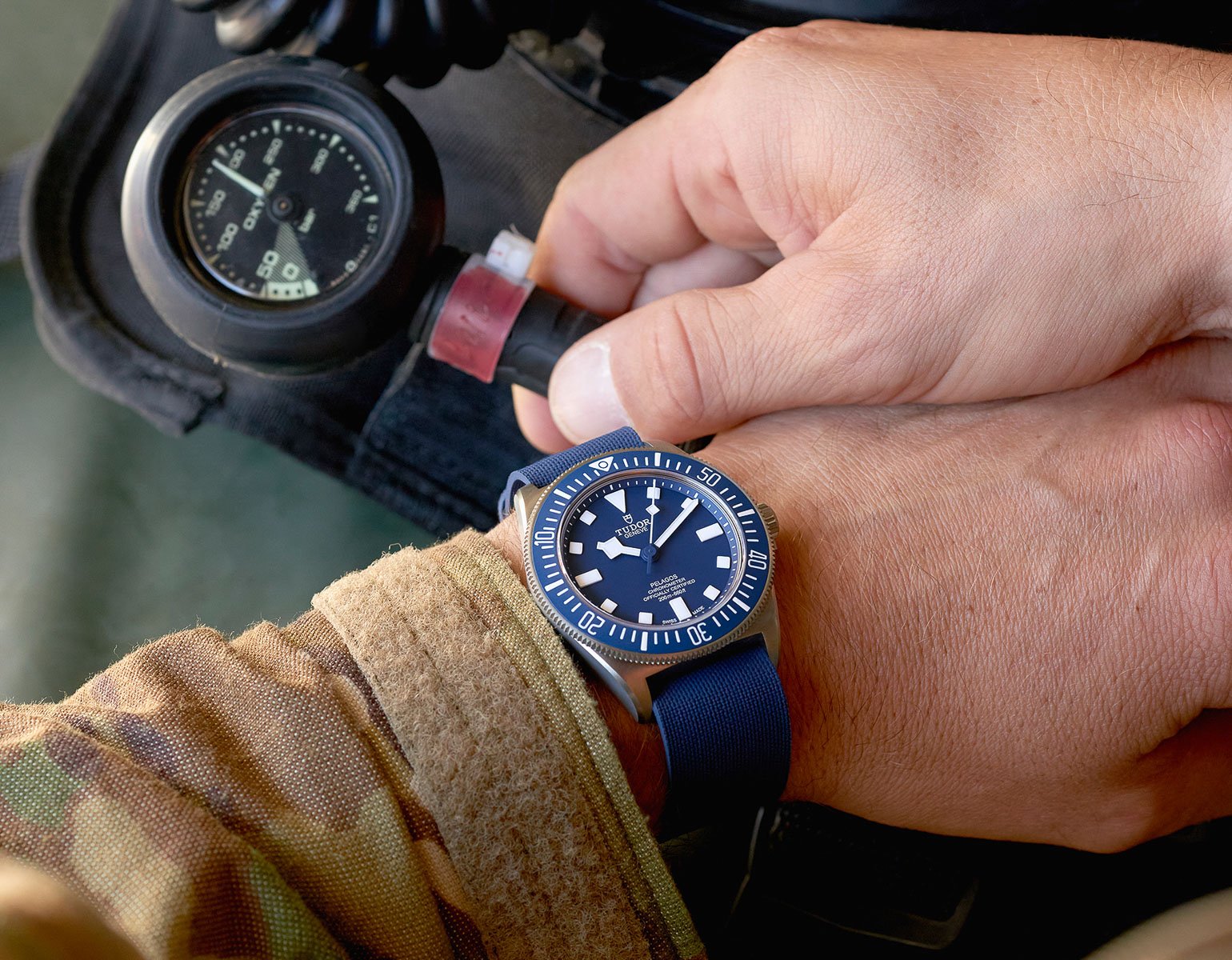Breaking News: Tudor Launches The Pelagos FXD Marine Nationale — AT LAST!
We (well, some of us) thought this day might have arrived sooner. Months after announcing a new partnership with Marine Nationale (the French Navy), Tudor has dropped the watch we’ve been furiously speculating over ever since. And what to say? Quite frankly, it’s a little weirdo. I think I’m “okay” with it, but I’m not quite sure. Do let us know what you make of it in the comments section below.
Let me sum this up for you before we take a look into the interesting backstory of the Tudor Pelagos FXD Marine Nationale. Here we have a new, Pelagos that shares very little with the existing Pelagos watches indeed. A different titanium case, bezel, and no date! Only the basic overall stylings of the original remain. In fact, it’s so novel it should perhaps be named something different entirely. Perhaps PelaBay might have done the job?
Something new
The bezel not only has a slightly tweaked but still fully-lumed typeface (that looks a bit thinner than the previous font, but somehow feels more cramped because of the explosion of minute markers around the numbers) but also employs countdown bezel markings (the numbers descend clockwise as opposed to ascending). This design is used for underwater navigation purposes. Allowing quick countdowns which can easily be reset. The bezel’s edge is also given sharper knurling than the standard model. Also interesting is the fact that the bezel is bi-directional and is a 120-click bezel as opposed to the standard 60 clicks. Date haters rejoice, Tudor has done away with the date window altogether for the MN Pelagos FXD.
Gone is the depth-delivering rehaut. That’s a real loss in my book. I always had that as the defining characteristic of the Pelagos. I loved the way the hour markers cut into it. It was charming. It was special. Now it’s gone.
Doubling down on the overall dullness of this model is a fixed-lug titanium case. On the one hand, I applaud Tudor for being so bold. On the other hand, however, I’m kind of aghast at what I regard as an almost reckless decision to force wearers to rely on pass-through or button-down strap options. There’s a place for military-inspired fixed lug watches. I’m just not sure it’s this brand or this price bracket. This design has also changed the case, removing the corners where an end-link might fit snug to the case. This certainly works much better in creating a straight line where the strap meets the case.
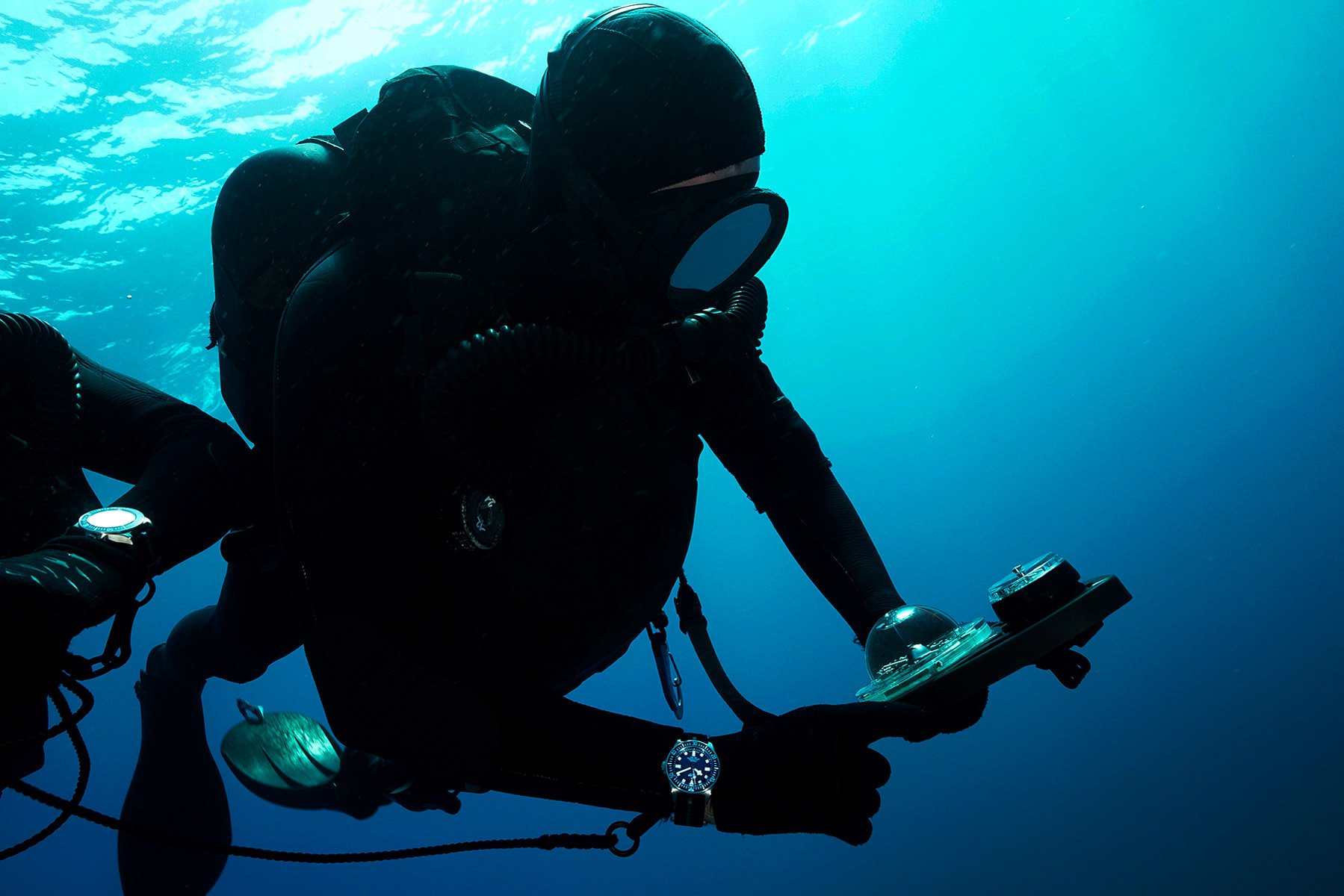
What’s the story here?
From the late 1950s until the 1980s, Tudor was the choice of the French Navy. After testing began (and met with successful completion) in 1956, the first official Tudor watches were supplied to the French Navy in 1958. The first reference in question was the Oyster Prince Submariner 7924. This watch is practically identical to the modern Black Bay M79230N-0009, although there are several “minor” details of the 7924 that make it marginally preferable (in my opinion). The Rolex-style crown of the 7924 is a big plus point for me, as is the “smiley” self-winding text, and the old Tudor rose logo.
Beyond that, however, the M79230N-0009 brought that late ’50s vibe back to the catalog years ago. Considering the first chapter of the Tudor/Marine Nationale story has already been reprinted, it is no wonder that focus (and speculation) has zeroed in on the latter parts of the saga.
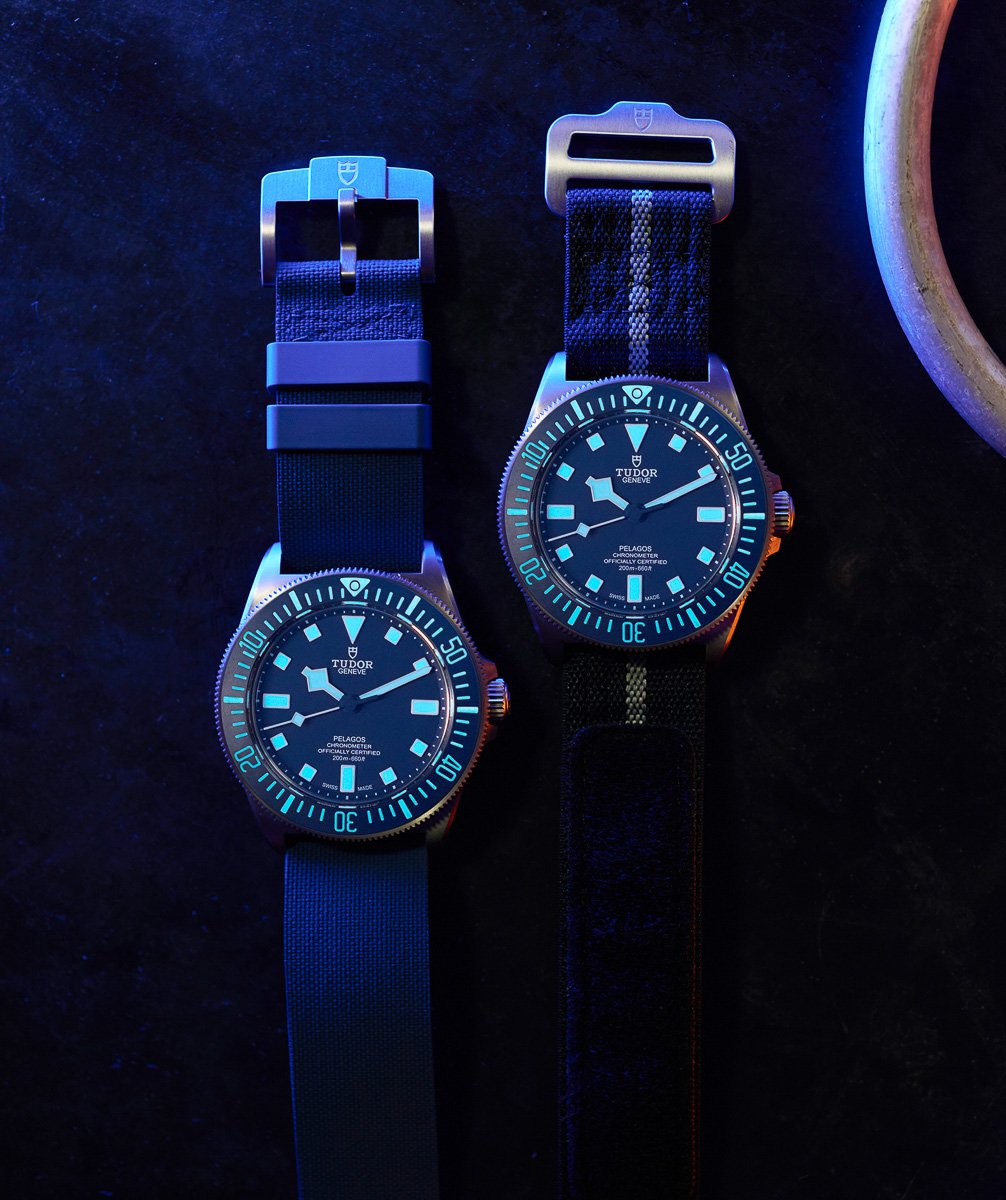
The glory days
We saw Tudor Subs with no crown guards, square crown guards, and then smooth crown guards enter the collection. Ten years after supply began (in the late ’60s) the iconic Snowflake dial was born. By 1975, this dial/handset configuration had become the most memorable of Marine Nationale collaboration pieces and is now one of the more sought-after by collectors.
Thus, the Tudor Submariner had evolved from the kind of thing we’re used to seeing marketed under the Black Bay label today, into something entirely distinct. This general Snowflake Sub set-up would go on to define the rest of the Tudor Submariner’s run.
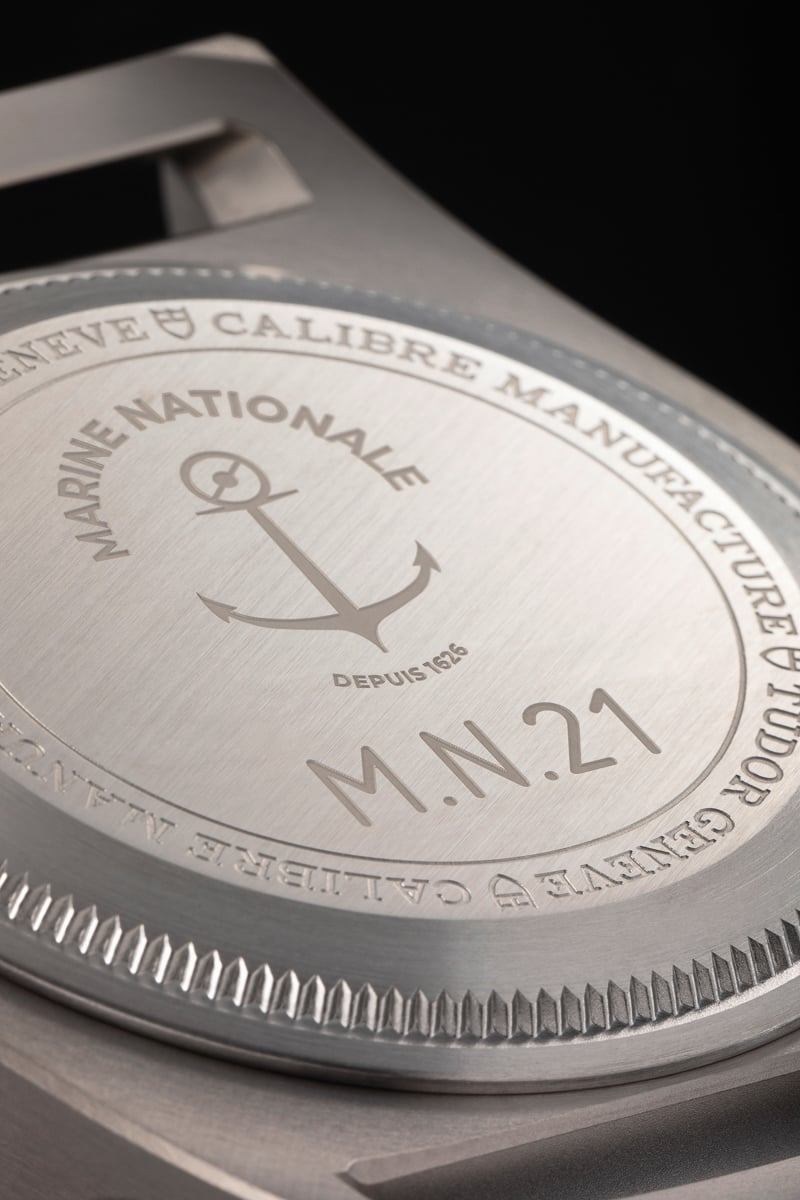
Should it have been the Black Bay instead?
If you’d asked me yesterday what I thought we would see today, I would have said that it wouldn’t make a huge amount of sense to go back to the Black Bay line for this generation of Marine Nationale watches. The era of MN/Tudor watches is fully covered by the M79230N-0009. What could Tudor have done with the Black Bay? The brand could have stuck an MN engraving on the case back or maybe issue it in the smaller size of the BB58, perhaps? Could you imagine if Tudor had resurrected the rose logo or the dial printing? Perhaps the old crown?
No, it was always going to be the Pelagos. It had to be. The Pelagos has the Snowflake dial layout and handset. It is a modern watch with historical inspiration. It is the real diver’s choice within the Tudor catalog. While less often mentioned than it should be, the standard Pelagos is water-resistant to 500 meters (not 300m as is the case for the Rolex Submariner). Something which you’ll notice is not the case with this watch, which is rated to 200m with no helium escape valve. Still, more than enough for the most adventurous among us.
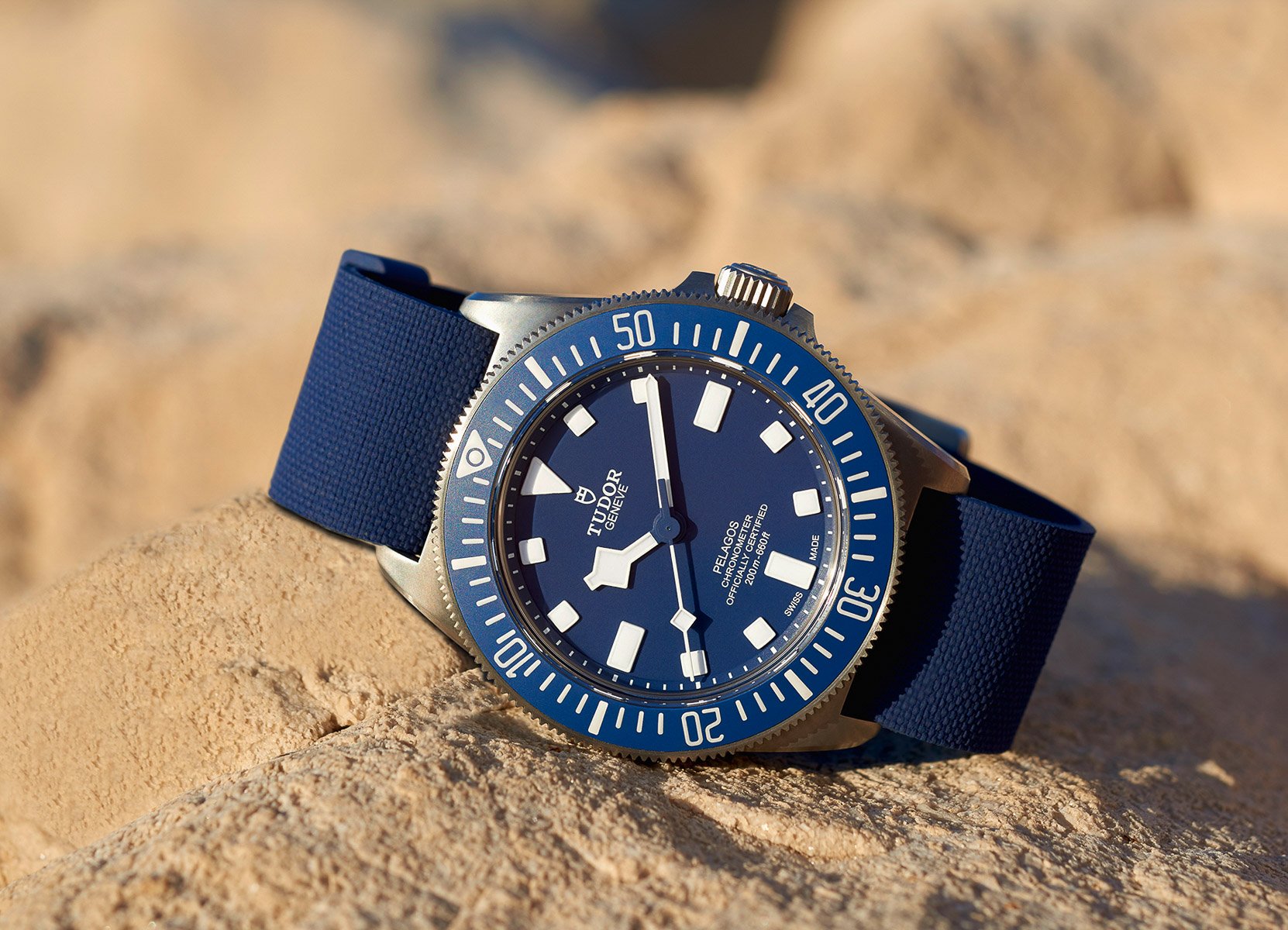
So is it good?
When I started this article I was pretty cool on the watch. Now, at the end of my initial assessment, I’m even cooler. I just don’t think this is as good as it could have been. On the flip side, I’m sure that my coolness toward it will be mirrored by plenty of you with warmer feelings toward this concept. I guess it qualifies as ambitious given the changes outlined in the opening paragraphs here, but it’s funny how something that takes so many risks can end up looking so mind-numbingly pedestrian.
I love Tudor and I love the Pelagos. For me, the cream of that collection is still the LHD. This model will titillate some, I’m sure, but it isn’t going to threaten my wallet for sure. I’m hoping, however, that this one inspires some healthy debate below this article, so let me (or the watch) have it! Learn more about Tudor here.

